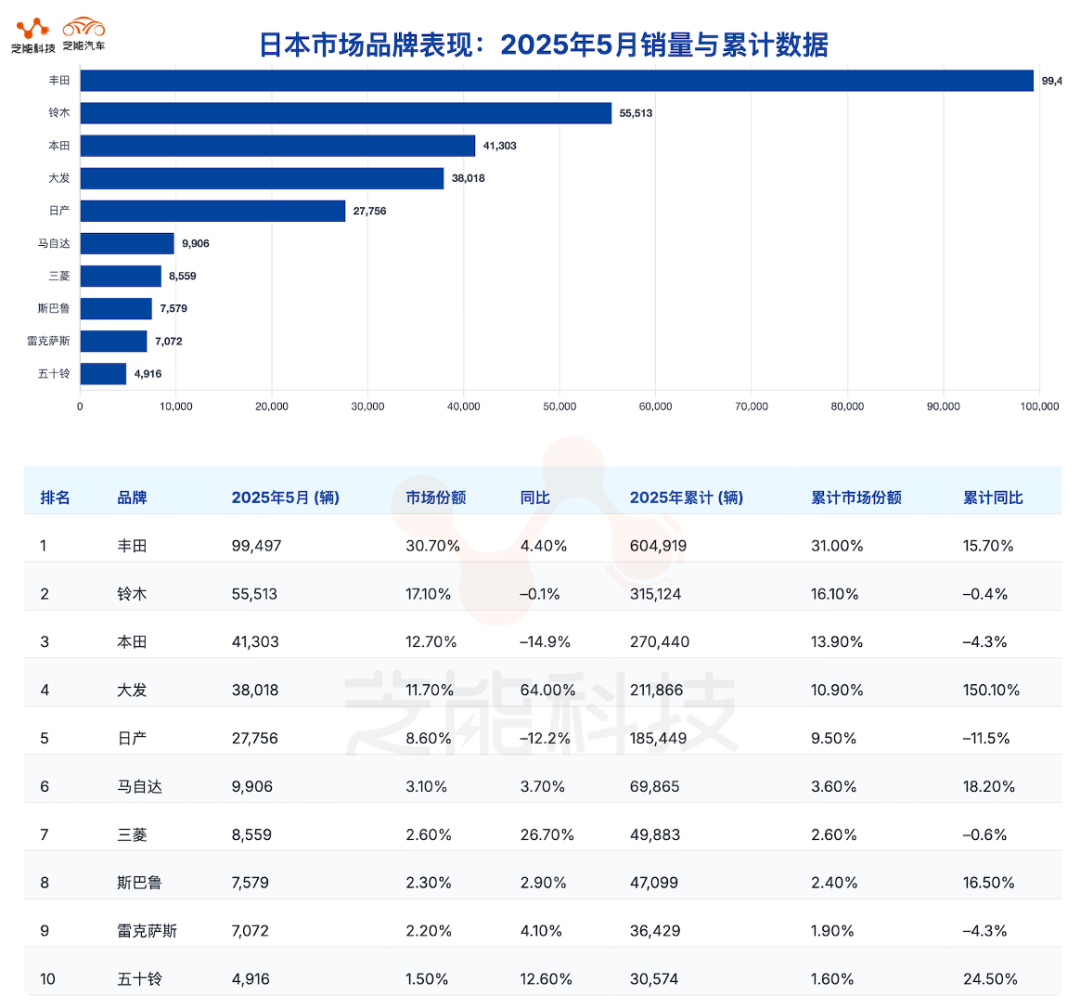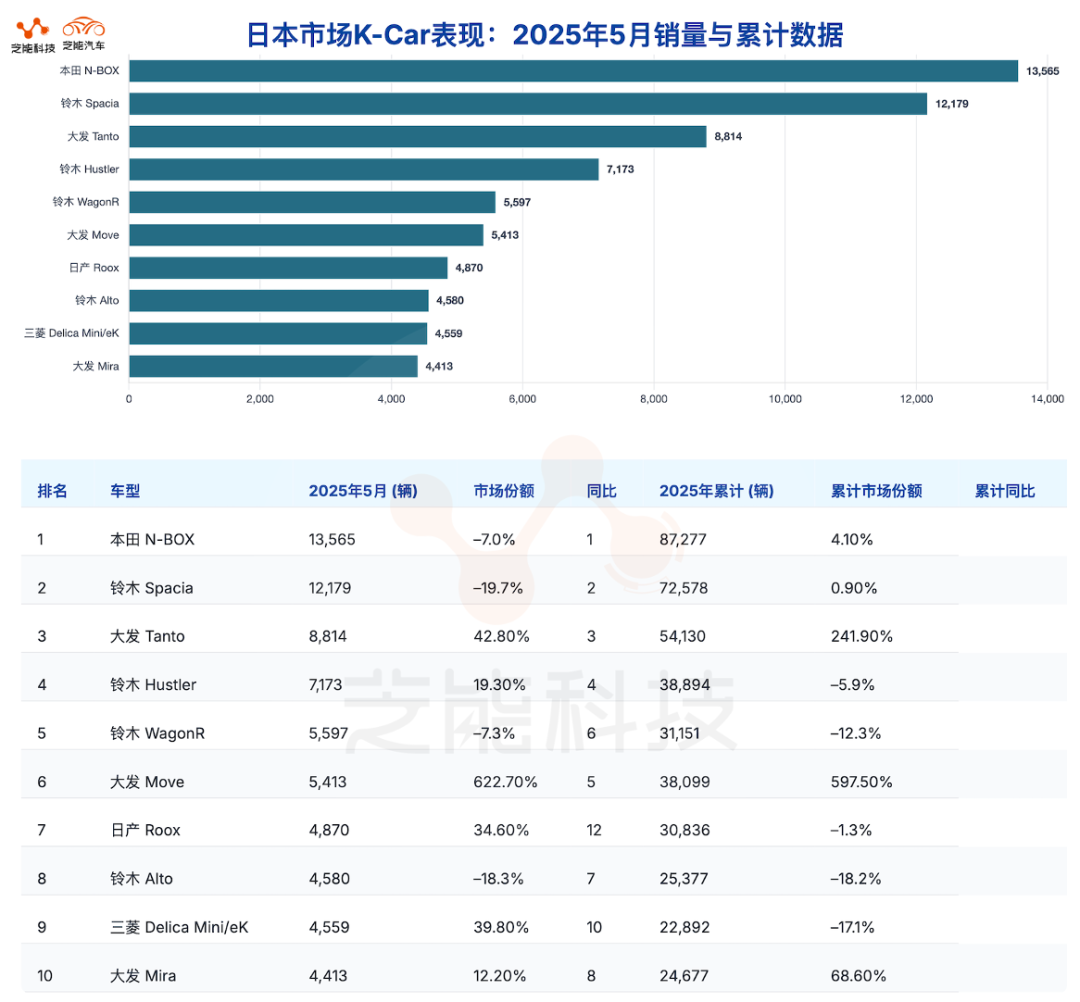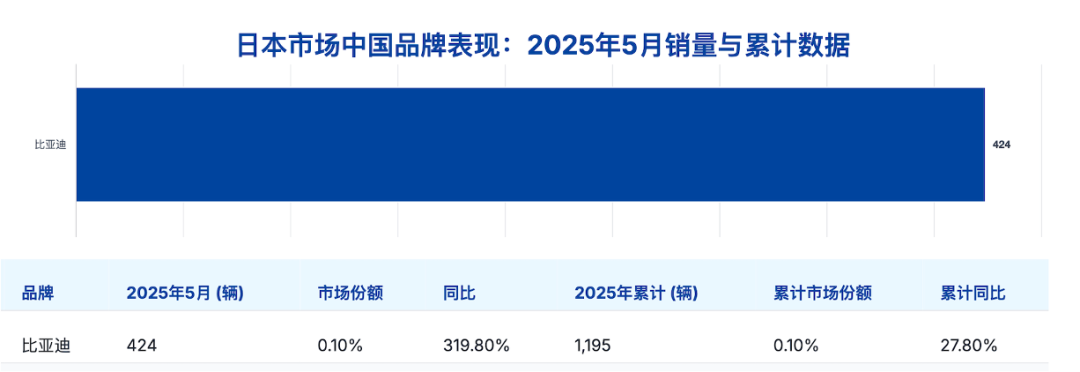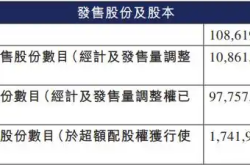Asian Auto Market | Japan May 2025: Toyota Revitalizes with Signs of Robust Recovery
![]() 06/23 2025
06/23 2025
![]() 589
589

In May 2025, Japan's new car market continued its moderate growth trajectory, with sales surging 3.7% year-on-year to reach 324,000 units.
Toyota recorded a significant surge this month, bolstered by strong performances from models like the Raize and Roomy, maintaining a market share exceeding 30% and further solidifying its dominant position in Japan. While Suzuki and Honda witnessed declines, Daihatsu, Mitsubishi, and other brands showed robust activity. Notably, the new energy brand BYD also exhibited initial signs of market breakthrough.
01
Market Overview:
Local Brands Steadily Rising Amidst Diversified Growth Dynamics
In May 2025, total new car sales in Japan amounted to 324,064 units, marking a 3.7% year-on-year increase. Year-to-date sales have reached nearly 1.95 million units, reflecting an 11.3% year-on-year growth.
◎ Toyota maintained its dominance with sales of 99,500 units, a 4.4% increase, and a market share of 30.7%.
◎ In contrast, Suzuki held a 17.1% share, while Honda's sales plummeted by 14.9%, reducing its share to 12.7%.
◎ Daihatsu emerged as the month's brightest star, with a 64% growth rate, significantly benefiting from the low base of the same period last year due to production disruptions. This underscores the resilience of the kei car market.
◎ Mitsubishi and Isuzu grew by 26.7% and 12.6%, respectively, maintaining their strongholds in their respective market segments.
◎ Lexus, Mazda, and Subaru recorded modest growth, maintaining positive momentum.

Foreign Brands:
◎ Mercedes remained the most favored import brand among Japanese consumers, selling over 4,000 units this month, a 5.3% year-on-year increase, ranking 11th.
◎ BMW, however, declined by 6.2%, overtaken by Volkswagen (+17.2%) and Audi (+10.8%).
◎ Notably, Mini's sales doubled this month, surging 92%, demonstrating the alignment of its small car lineup with Japanese urban consumers.
◎ BYD from China, despite still having a small sales base, witnessed rapid growth of 319.8% year-on-year, exceeding 400 units sold per month, signaling its emerging influence in the niche new energy market.

In the conventional model rankings:
◎ The Toyota Yaris/Cross, despite a 13.2% year-on-year decline, topped the list with sales of 11,700 units, underscoring its solid market foundation.
◎ The Toyota Raize delivered an impressive performance, with sales soaring to 8,867 units, a year-on-year increase of over 200%, catapulting it to second place. This marks the first time since late 2020 that the Raize has ranked in the top two, showcasing its strong competitiveness in the small SUV segment.
◎ The Toyota Roomy also grew by 64.4%, ranking third, indicating that small cars and multi-purpose vehicles remain core choices for Japanese families.
◎ Honda Freed grew by 57.1%, reflecting its continued appeal in the small and medium-sized MPV segment.
◎ Traditional best-sellers like the Toyota Corolla/Cross and Sienta saw significant declines, down 46.1% and 15.9%, respectively.

In the kei car segment:
◎ Honda N-BOX and Suzuki Spacia remained the cornerstones of Japan's kei car market, selling 13,600 and 12,200 units, respectively. Despite slight year-on-year declines, they maintained their leading positions due to their substantial sales bases.
◎ Daihatsu Tanto and Move exhibited significant growth, with Move's sales surging 623% year-on-year, ranking sixth among the top ten kei cars. This reflects the initial success of Daihatsu's model restructuring efforts.
02
Model Structure Evolution:
Toyota Strengthens Multi-faceted Layout; Honda Urgently Needs to Break the Stalemate
From the perspective of model segment structure:
◎ Toyota boasts representative models across various segments, including sedans, MPVs, SUVs, and kei cars, showcasing the depth and breadth of its product line. In addition to the Yaris, Raize, and Roomy, models like Voxy and Noah also entered the top ten, with growth rates of 22.3% and 25.4%, respectively, supporting Toyota's share in the medium and large MPV market.
Furthermore, models such as Alpha, Prius, Corolla, and Crown, though at different life cycle stages, collectively exhibit a trend towards transitioning from traditional sedans to multi-functional hybrid vehicles.
Toyota Prius sales increased by 225% year-on-year, indicating a robust recovery in the hybrid market and reflecting increasing consumer acceptance of energy-efficient vehicles.
On the Lexus front, new models like the NX350h and LBX maintained their leading positions, demonstrating stable performance in the luxury hybrid segment.
◎ Honda's flagship model, the Accord, failed to make the top 50, with overall sales heavily reliant on family cars like Freed, StepWGN, and Vezel.
Vezel's sales declined by nearly 40%, and Fit's sales fell by over 45%, indicating that its traditional B-segment sedans and small cars are struggling to ignite new rounds of consumer demand.
Newer SUV models like ZR-V and WR-V have yet to gain widespread influence in the Japanese market, and the brand as a whole is confronting the dual challenges of aging models and blurred product positioning.
◎ Nissan's main models, including Note, Serena, and X-Trail, all experienced declines of around 20%, with the electric Sakura model falling by 43%.
This suggests that its electric vehicles targeting family users and urban commuters have yet to gain sufficient market recognition.
◎ Among foreign brands, besides Mercedes maintaining its leading position, Volkswagen returned to the top 15 this month, thanks to the introduction of its ID series models and a brand rejuvenation strategy.
Audi and BMW, however, faced sluggish growth due to price pressure from Japanese luxury brands and localization product limitations.

◎ In the new energy market, BYD's monthly sales are still below 1,000 units, but its growth rate of over 300% underscores the early returns of its strategic introduction.
Chinese new energy products, epitomized by models like the Seal and Dolphin, are gradually aligning with Japan's preference for compact, cost-effective electric vehicles. It is anticipated that they will continue to expand their presence in the future.
Summary
Japanese auto market data reaffirms that local brands maintain an absolute dominant position in a market characterized by complex structures and diverse consumer demands. Notably, Toyota, with its comprehensive layout and stable production capacity, once again demonstrated the strategic advantage of "multi-point breakthrough" in its product offerings.








